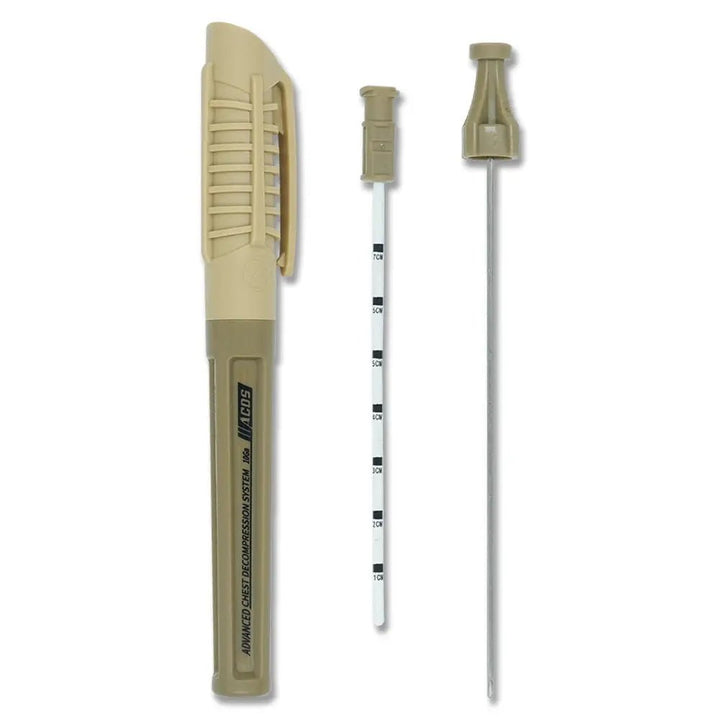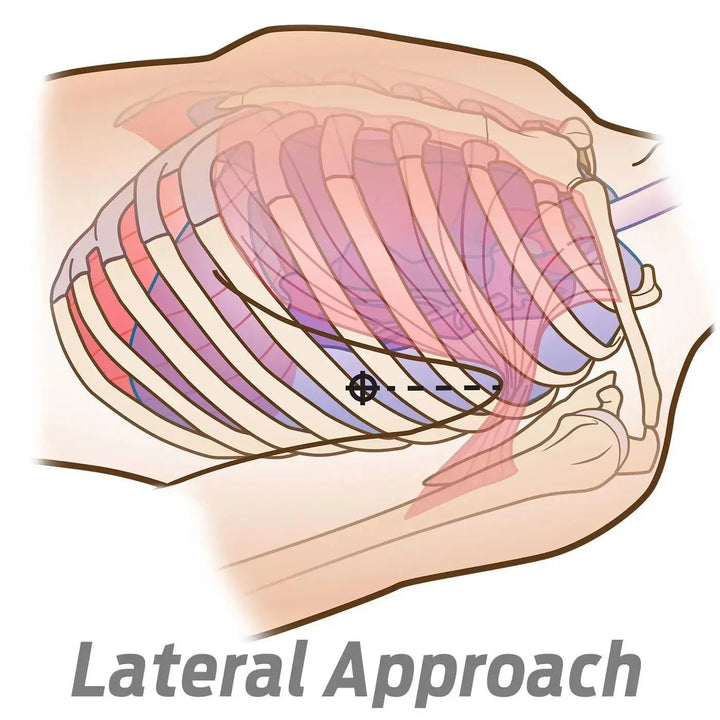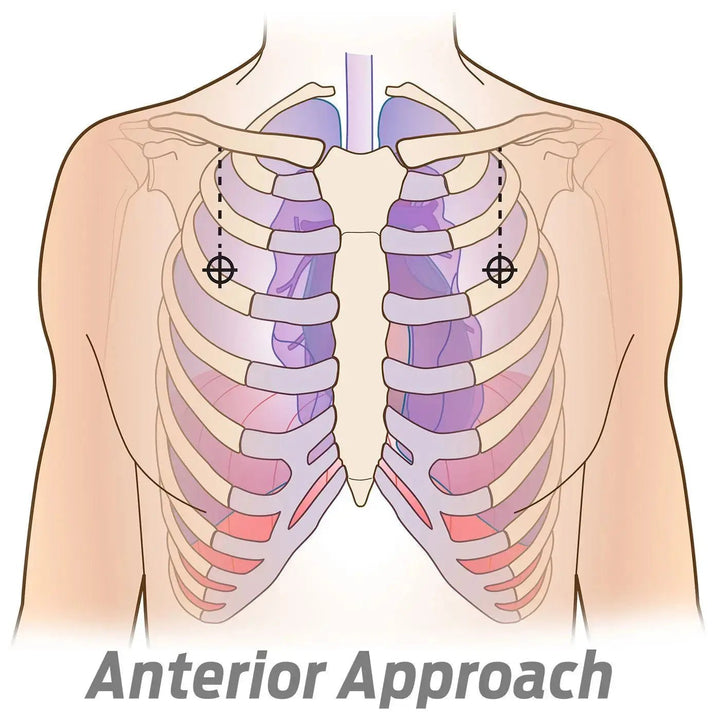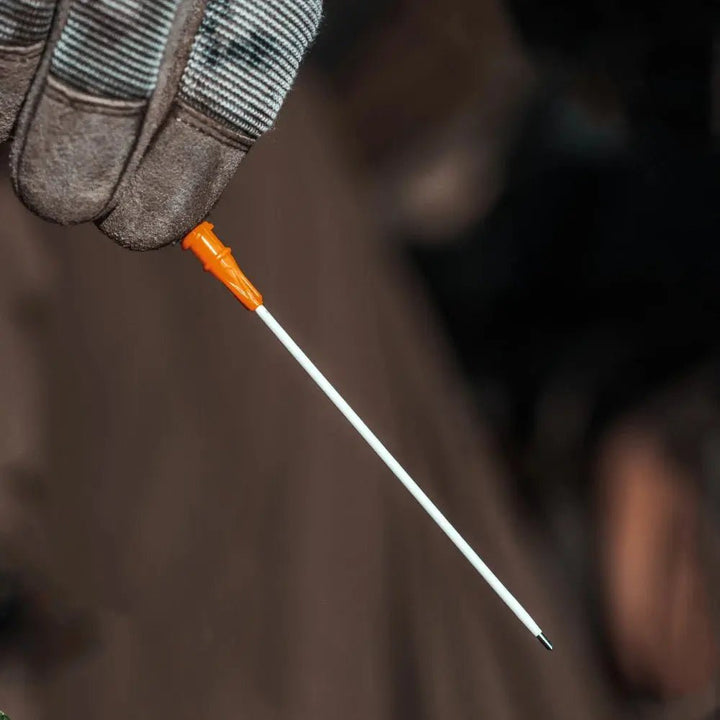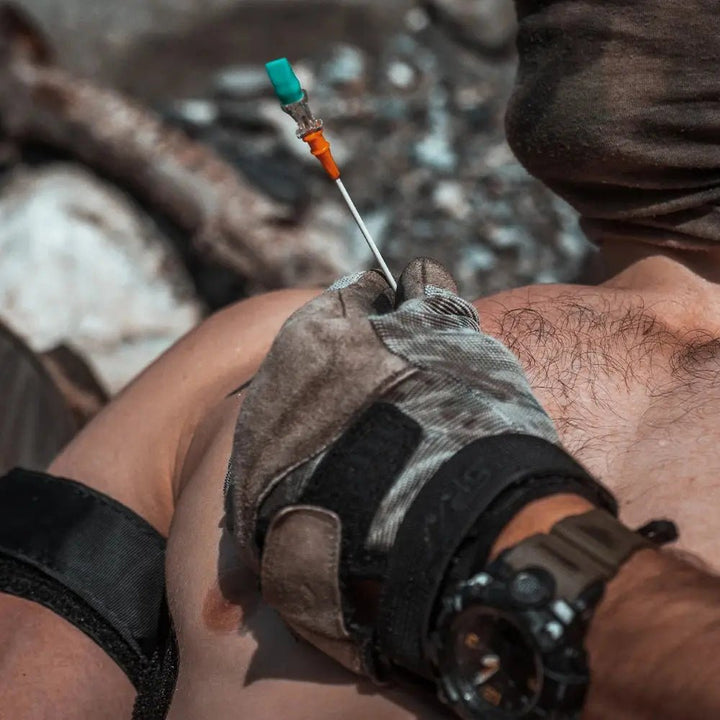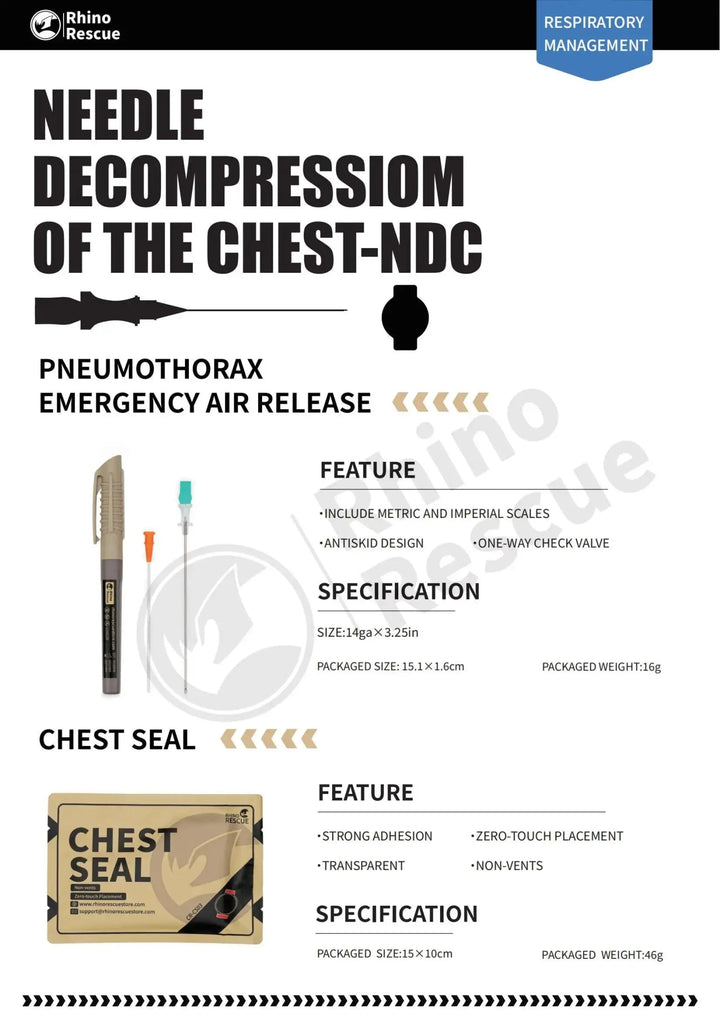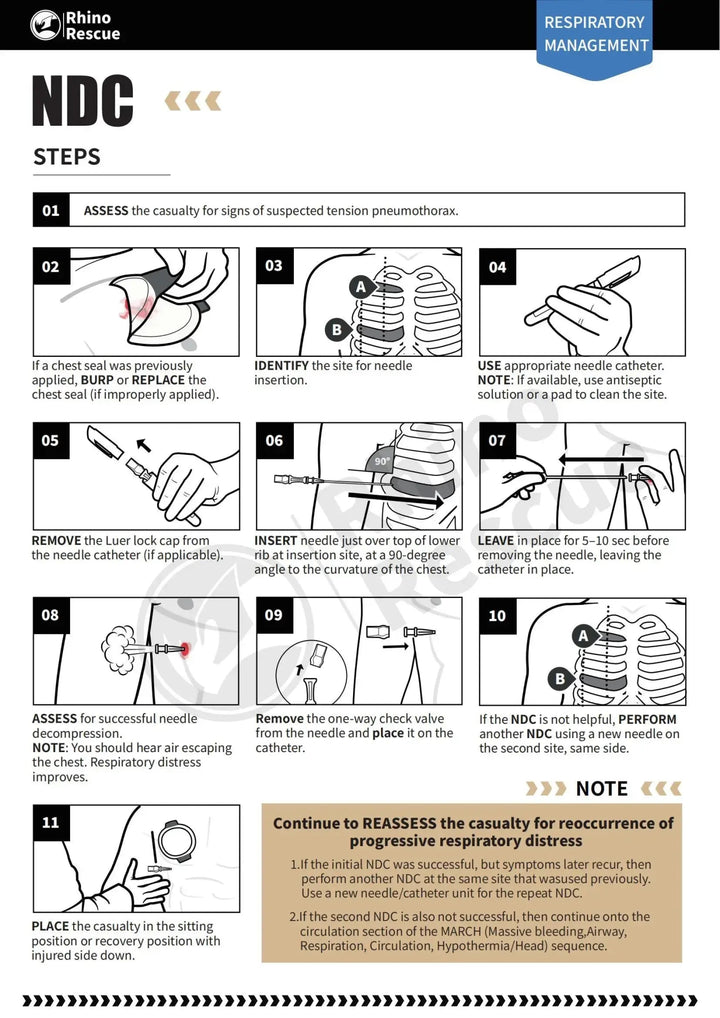-
TCCC
-
For professionals
-
For civilians
Free shipping within the EU on orders over €70
The decompression tube includes a pre-sterile, one-way valved 14ga catheter designed for tension pneumothorax relief in the field. Suitable for emergency medical care, tactical combat care (TCCC), IFAK equipment and rescue operations.
✔ Features:
✔ Product benefits:
✔ Technical specifications:
Assess the patient for signs of suspected tension pneumothorax.
If a chest seal is already in use, check or replace it if it is incorrectly positioned.
Identify the correct place to insert the needle:
A = 2nd-3rd intercostal space at the midclavicular line (2nd ICS, midclavicular line)
B = 5th-6th intercostal space at the midaxillary line (5th ICS, anterior axillary line)
Choose the right type of sterile needle catheter.
NOTE: If available, clean the area with an antiseptic solution or cloth.
Remove the catheter Luer lock cap (if applicable).
Insert the needle just above the top of the lower rib, at a 90-degree angle to the curvature of the chest.
Hold the needle in place for 5–10 seconds , then remove the needle, leaving the catheter in place.
Assess the success of needle decompression.
NOTE: You should hear a wheezing sound, and your breathing difficulty should ease.
Remove the one-way valve from the needle and attach it to the catheter .
If the first needle decompression does not work, repeat the procedure with a new needle and another puncture site, on the same side .
Place the patient in a semi-sitting or lateral position with the affected side facing down .
Continuously reassess for possible recurrence of respiratory failure:
If the first decompression helped, but symptoms return, repeat on the same spot with a new device.
If no other measures help, proceed to Section C (Circulation) of the ABCDE/MARCH protocol .



